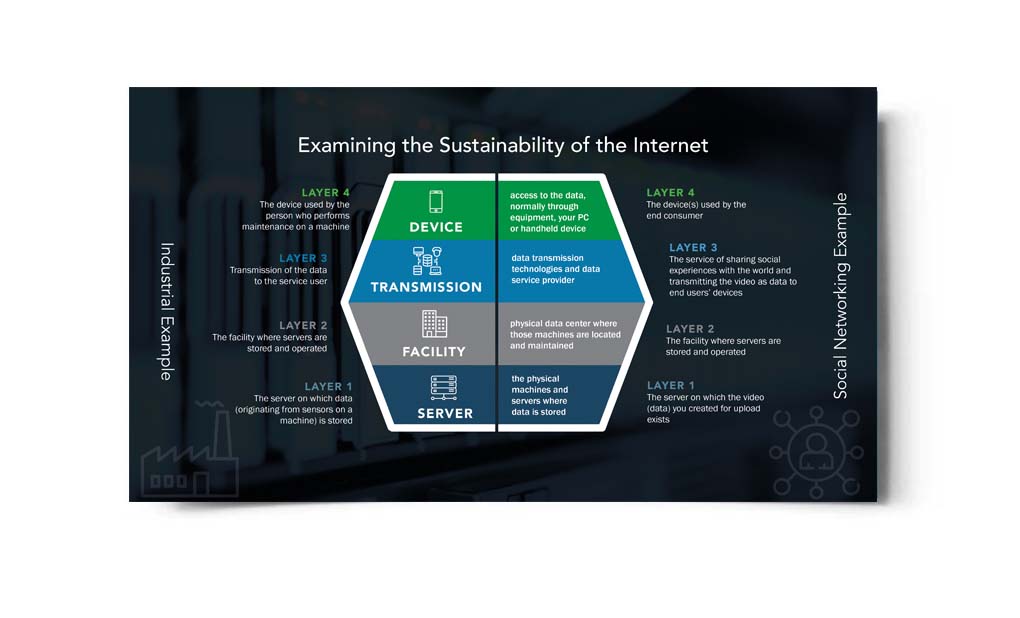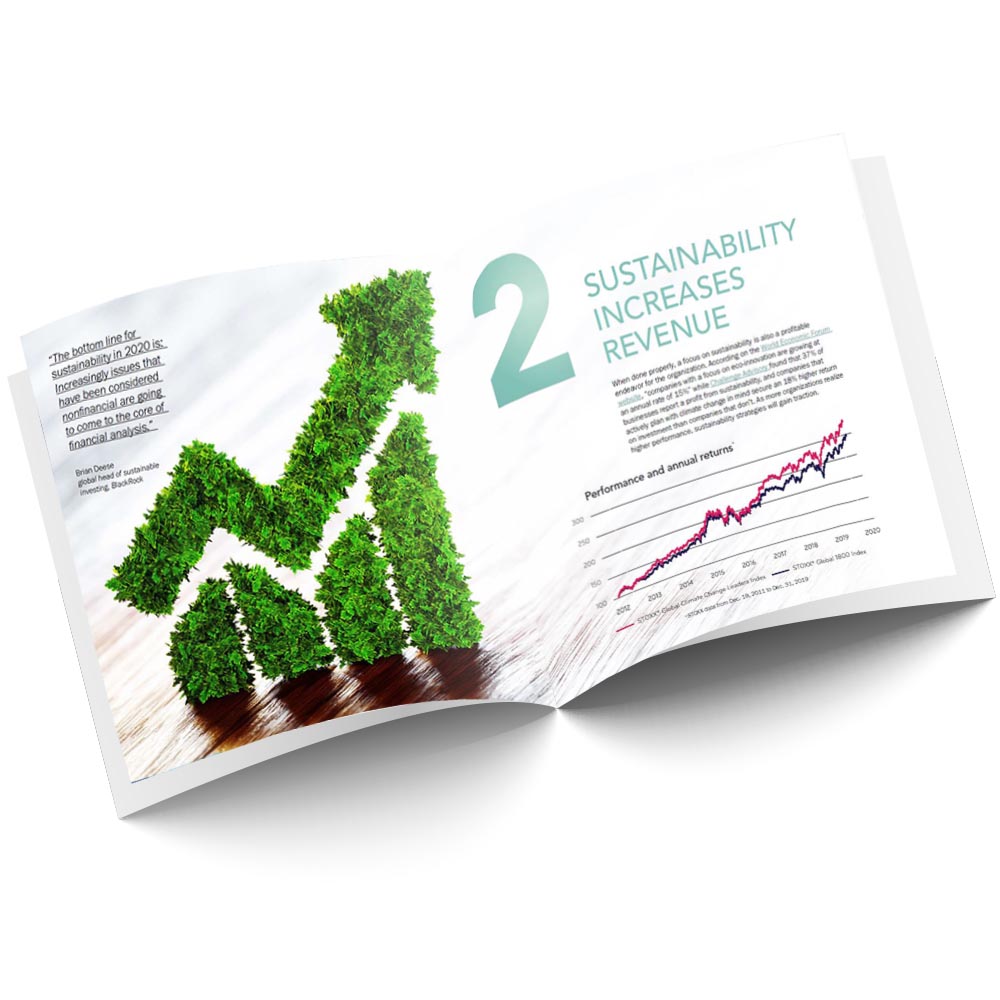Given its sway in the global economy, the financial industry has an influential role to play in helping the world reach net-zero emissions by 2050. Financial institutions can aid in this transition by measuring the emissions they finance through investing and lending activities, and then taking steps to reduce them.
The largest share of the financial industry’s environmental impact comes from “financed emissions,” which are the indirect emissions that stem from a financial institution’s investment portfolio. Financed emissions are included in Scope 3 Category 15 of the Greenhouse Gas (GHG) Protocol.
According to a CDP report that analyzed data from 332 financial institutions, emissions from global financial institutions’ portfolios are on average “700x larger than direct emissions, per organization reporting financed emissions.” However, only 45% of banks, 46% of asset managers and 48% of asset owners report that they’re working to align their investments with goals to keep global warming below 2 degrees Celsius. Additionally, the CDP reported that “financial institutions are underestimating the most significant climate-related risks with a potential financial impact of over US$1trillion.”
In a recent Sphera webinar covering financed emissions, Jerome Taraska, a senior account manager at CDP, said that financial services companies can influence their portfolio companies to reduce their environmental impact due to the privileged relationship they have with them. This influence also allows financial services companies to hold their portfolio companies accountable for meeting their emissions targets, which is important to drive progress on climate goals and fight greenwashing.

Why Quantifying Financed Emissions Is Challenging
Banks, private equity firms and investment companies face a number of challenges when quantifying and reducing their financed emissions. For example, emissions data may be incomplete or low quality, and there are different methodologies for accurately measuring emissions for each asset class.
Stefan Premer, global lead of climate strategy at Sphera, said in the webinar that financial services companies must contend with a multitude of data sources and data gaps. Working with disparate and incomplete data can make it difficult to set emissions reduction targets.
He also pointed out that financial institutions rely too heavily on emissions estimates, which can impede progress toward meeting emission reduction targets. Specifically, Premer identified the main challenges financial services companies face when quantifying their financed emissions. These include:
- Lack of physical activity data. Financial institutions often don’t have data on energy use, portfolio emissions and physical attributes to quantify emissions and decarbonize.
- Lack of access to reliable emissions factors. Financial services companies also lack reliable emissions factors needed to calculate portfolio company emissions accurately. Often, financial services companies use economic-activity-based emissions factor libraries to calculate emissions, which are based on outdated emissions and macroeconomic data and don’t paint an accurate picture of financed emissions. To ensure accuracy, financial services companies must instead use a physical-activity-based data set, which uses emissions estimated based on primary physical activity data collected from investee companies, such as energy consumption or material production.
- Lack of expertise to quantify financed emissions. Many financial services companies also need the expertise and capacity to successfully quantify emissions.
How to Quantify Financed Emissions and Reach Net Zero
Premer outlined the key steps financial institutions can take to make progress in their net-zero journeys. These include:
1. Developing a method for quantifying portfolio emissions and assessing their reduction potential. This includes analyzing carbon hotspots, pinpointing the emissions reduction pathways for investments and determining the emissions of a portfolio on a material level.
2. Setting science-based targets. This step involves quantifying the financial institution’s inventory, which includes financed emissions. Then, financial institutions must set targets for Scope 1, 2 and 3 emissions. They should also identify which asset classes require targets to be set in accordance with the Science-Based Targets initiative (SBTi) classification for private equity direct investments.
3. Aligning portfolios to meet climate targets. Financial services companies should begin to transition their portfolios to investing in climate solutions. This helps ensure they’re meeting the 1.5-degree Celsius target set by the Paris Agreement.
4. Reviewing progress toward goals. Once financial institutions have developed a method for quantifying financed emissions, set science-based targets and started working on aligning their portfolios with climate targets, they should continuously evaluate their progress toward meeting climate goals. They should also assess the potential for emissions reduction in their portfolios. Doing this requires financial institutions to manage a large amount of data, which is where automation and software can help streamline the process.
Key Methodologies, Frameworks and Regulations to Know
Getting a handle on financed emissions will be necessary for financial services companies to ensure that they can manage the transition risks associated with moving to a net-zero economy. This will be a difficult challenge to solve, but there are methods available to financial services companies to aid them as they progress on their net-zero journeys.
For example, the Partnership for Carbon Accounting Financials (PCAF) was established in 2015 to aid financial institutions in measuring and disclosing their financed emissions. Its methodologies and standards are aligned with a number of other organizations, including the CDP, the SBTi and the Task Force on Climate-Related Financial Disclosures (TCFD).
Financial services companies should also take EU sustainable finance regulations into consideration. For example, a regulation that financial institutions should have on their radar is the Sustainable Finance Disclosure Regulation (SFDR), which, along with the Corporate Sustainability Reporting Directive (CSRD) is part of the EU’s sustainable finance framework.
The SFDR is built on the principle of “do no significant harm.” It requires financial institutions to integrate sustainability risks, consider their adverse impacts and present environmental or social characteristics in a manner that is comparable and transparent. For more information on the SFDR, check out our blog.
Transitioning to a Net-Zero World with the Right Tools and Processes
Armed with the right data, software and expertise, financial institutions can manage and disclose their financed emissions and meet emissions reduction targets and regulatory requirements. By getting a handle on their financed emissions, financial institutions can do their part in advancing the world toward a net-zero economy. After all, investing in a more sustainable future pays dividends for everyone.
This blog was adapted from our financed emissions webinar. To learn more about this topic, you can watch the full webinar here.










